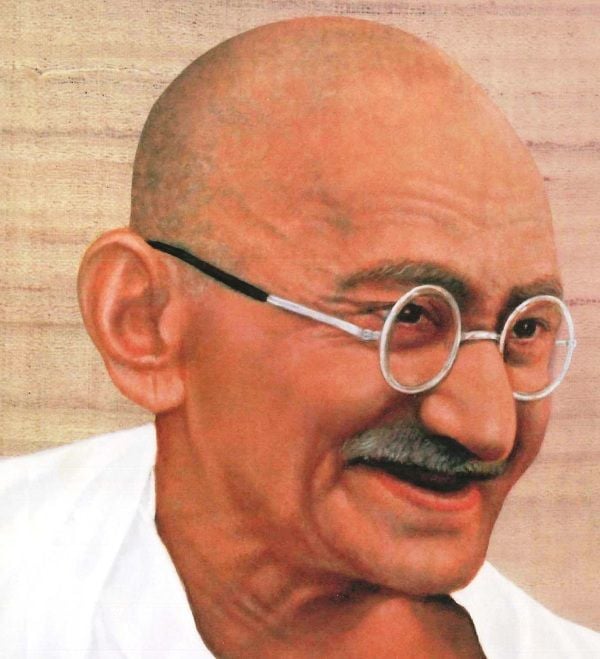
| Bio/Wiki | |
| Full Name | Mohandas Karamchand Gandhi |
| Nickname(s) | • Mahatma • Father of the Nation • Bapu |
| Profession(s) | • Politician • Lawyer • Peace Activist • Philosopher |
| Major Works | • Gandhi witnessed racism, prejudice, injustice against himself and Indians in South Africa, after witnessing all this, Gandhi extended his original period of stay in South Africa to help Indians in opposing a bill to deny them the right to vote. He asked Joseph Chamberlain, the British Colonial Secretary, to reconsider his position on this bill.
• He helped found the Natal Indian Congress in 1894, and through this organization, he molded the Indian community of South Africa into a unified political force. • A new act was promulgated by Transvaal govt in 1906; as per this Act, every male Asian had to register himself and produce on-demand a thumb-printed certificate of identity. Unregistered persons and restricted immigrants could be deported without a right of appeal or fined on the spot if they failed to comply with Act. At the same time, Gandhi started ‘Satyagraha,’ a non-violent protest in South Africa. He urged Indians to boycott the new law and to suffer the retribution for doing so. The community adopted this plan, and during the ensuing seven-year struggle, thousands of Indians were jailed, flogged, or shot for striking, refusing to register, for burning their registration cards or engaging in other forms of nonviolent resistance. The government quelled the protest easily, but the public outcry constrained the South African leader, Jan Christiaan Smuts, to negotiate a compromise with Gandhi. • Upon returning to India in 1915, Gandhi played a major role in India’s Independence, Gandhi took leadership of the Congress in 1920 and started escalating demands for India’s independence. 26 January 1930 was the day when the Indian National Congress declared the independence of India. The British did not recognize the declaration, but negotiations ensued with Congress taking a role in the provincial government in the late 1930s. • In 1918, Gandhi initiated Champaran and Kheda agitations. • In 1930, the Salt March Movement was initiated by Mahatma Gandhi to oppose taxation on salt by the British Government. • On 8 August 1942, Mahatma Gandhi, initiated a movement called the “Quit India Movement.” Gandhi made a call to “Do or Die” in his Quit India speech delivered in Bombay at the Gowalia Tank Maidan. |
| Famous Quotes | • “Be the change that you want to see in the world.” • “The weak can never forgive. Forgiveness is an attribute of the strong.” • “An eye for an eye will make the whole world blind.” • “Nobody can hurt me without my permission.” • “In a gentle way, you can shake the world.” • “An ounce of patience is worth more than a tonne of preaching.” • “A man is but a product of his thoughts. What he thinks he becomes.” • “Live as if you were to die tomorrow. Learn as if you were to live forever.” • “First, they ignore you, then they laugh at you, then they fight you, then you win.” • “Poverty is the worst form of violence.” |
| Physical Stats & More | |
| [1]Aaj Tak – YouTube Height | in centimeters- 165 cm in meters- 1.65 m in Feet Inches- 5’ 5” |
| [2]Aaj Tak – YouTube Weight | in kilograms- 46.7 kg in pounds- 102 lbs |
| Eye Colour | Black |
| Hair Colour | Bald |
| Personal Life | |
| Date of Birth | 2 October 1869 (Saturday) |
| Place of Birth | Porbandar State, Kathiawar Agency, British Indian Empire (now in Gujarat, India) |
| Date of Death | 30 January 1948 (Friday) |
| Place of Death | New Delhi, India |
| Death Cause | Assassination by shooting |
| Age (at the time of death) | 78 Years |
| Resting Place | Raj Ghat in Delhi, but his ashes were scattered in various Indian Rivers |
| Zodiac sign | Libra |
| Signature | |
| Nationality | Indian |
| Hometown | Porbandar, Gujarat |
| School | • A Local School in Rajkot • Alfred High School, Rajkot • A High School in Ahmedabad |
| College | • Samaldas College, Bhavnagar State (now, District Bhavnagar, Gujarat), India • Inner Temple, London • UCL Faculty of Laws, University College, London |
| Educational Qualification | Barrister-at-law |
| Religion | Hinduism |
| Caste | Modh Baniya [3]Amar Ujala |
| Food Habit | Vegetarian
Note: The young Gandhi once had a few bites of goat meat; believing it would make him stronger just like the Britishers. He quit the non-vegetarian diet when he was in London for his law studies. [4]India Today |
| Hobbies | Reading, Listening to Music |
| Controversies | • In 2016, some Ghanian students called for the removal of a statue of Mahatma Gandhi from a university campus. They accused Gandhi of being racist towards black people by holding the view that Indians were higher than them. This view was also held by two South African professors Ashwin Desai and Goolam Vahed who claimed that Gandhi labeled black Africans as “savage,” “raw,” and “indolent.” That also claimed that Gandhi had also demanded separate entrances for blacks and Indians at the Durban post office while he was living in South Africa.
• In 1906, Gandhi took an oath to abstain from sex life. Gandhi carried out several experiments to test himself as a celibate. He brought his grandniece, Manubehn, to sleep naked in his bed as part of a spiritual experiment in which Gandhi could test himself as a celibate (Brahmachari). Several other young women and girls also sometimes shared his bed as part of his experiments. These experiments took flak from many people in India and other parts of the world. |
| Relationships & More | |
| Sexual Orientation | Straight |
| Marital Status (at the time of death) | Widower |
| Marriage Date | May 1833 |
| Marriage Type | Arranged [5]Wikipedia |
| Family | |
| Wife/Spouse | Kasturba Gandhi (born as; Kasturbai Makhanji Kapadia) (11 April 1869 – 22 February 1944) |
| Children | Son(s)– 4 • Harilal • Manilal • Ramdas • Devdas Daughter(s)– 2 • Laxmi (adopted; daughter of the harijans Dudabhai and Daniben Dafda); died on 31 January 1984 [6]Outlook • Madeleine Slade aka Mirabehn (adopted; daughter of the British Rear-Admiral Sir Edmond Slade); died on 20 July 1982 [7]Amar Ujala |
| Parents | Father– Karamchand Gandhi, Dewan (chief minister) of Porbandar state Mother– Putlibai Gandhi (Homemaker) |
| Siblings | Brother(s)– 2 • Laxmidas Karamchand Gandhi • Karsandas Gandhi Sister– 1 • Raliatbehn Gandhi |
| Family Tree | |
| Favourites | |
| Persons | Gautama Buddha, Harishchandra, and his mother Putlibai |
| Author | Leo Tolstoy |
| Singer | Juthika Roy |
Some Lesser Known Facts About Mahatma Gandhi
- Was Mahatma Gandhi a smoker? Yes, he quit smoking while studying law in London. [8]India Today
- Mahatma Gandhi consumed alcohol during his Law studies in London before he decided to quit. [9]India Today.
- Mohandas Gandhi was born into a Hindu Modh Baniya family in Porbandar, which is also recognized as Sudamapuri.
- Despite his father, Karamchand Gandhi, having only received an elementary education, he demonstrated his capabilities by serving as a competent Chief Minister of Porbandar State. Prior to this position, Karamchand had been employed as a clerk in the state administration.
- Karamchand, while serving as the Chief Minister of Porbandar, entered into matrimony four times. Sadly, his first two wives passed away at a young age, shortly after giving birth to their daughters. Karamchand’s third marriage did not result in any children. In 1857, he entered into his fourth marriage with Putlibai, who lived from 1841 to 1891.
- Putlibai, his mother, hailed from a Pranami Vaishnava family in Junagadh.
- Prior to the birth of Mohandas (Mahatma Gandhi), Karamchand and Putlibai had three children: Laxmidas (1860-1914), Raliatbehn (1862-1960), and Karsandas (1866-1913).
- Mohandas, the last child of Putlibai, was born on 2 October 1869 in Porbandar, within the confines of a dark and windowless room.
- According to Raliatben, Gandhi was an extremely active individual, constantly engaged in either play or exploration. He had a particular fondness for twisting the ears of dogs, which was one of his cherished hobbies.
- Gandhiji’s childhood was deeply influenced by the timeless Indian tales of king Harishchandra and Shravana. These stories left an indelible mark on him, shaping his understanding of truth, love, and sacrifice from an early age. In a revealing interview, he confessed that these narratives continued to linger in his mind, often leading him to imagine himself as Harishchandra countless times.
- Gandhiji’s mother was a devout and spiritual woman, greatly influencing him. She would not eat without first praying, and it was customary for her to observe consecutive fasts. It is possible that his mother’s dedication to fasting inspired Gandhiji to undertake extended fasts in his later life.
- His father, Karamchand, departed Porbandar in 1874 and assumed the position of a counsellor to Rajkot’s ruler, Thakur Sahib.
- Mohandas joined a nearby school in Rajkot when he was 9 years old.
- joined a high school in Rajkot at the age of 11. Throughout his time there, he remained an average student and possessed a shy demeanor.
- During his time in High School, Mohandas encountered a Muslim acquaintance named Sheikh Mehtab. Mehtab, with the intention of helping him grow taller, suggested that he consume meat. However, on one occasion, Mehtab took him to a brothel, an experience that deeply unsettled Mohandas. As a result, he distanced himself from Mehtab’s company.
- At the age of 13 in May 1883, Mohandas entered into an arranged marriage with Kasturbai Makhanji Kapadia, who was 14 years old. Kasturbai was affectionately known as “Ba”. Reflecting on their wedding day, Mahatma Gandhi described marriage as a joyous occasion filled with new clothes, sweets, and the presence of loved ones. However, he also expressed regret for the intense desires he had towards his young spouse.
- His father passed away in 1885 when Mahatma Gandhi was just 16 years old. In that same year, he also experienced the loss of his first child, who sadly lived for only a few days. Afterward, Mahatma Gandhi and his spouse went on to have four more sons: Harilal (born in 1888), Manilal (born in 1892), Ramdas (born in 1897), and Devdas (born in 1900).
- He completed his high school education in Ahmedabad and graduated in November 1887, when he was 18 years old.
- enrolled at Samaldas College in Bhavnagar State in January 1888. Nevertheless, he decided to drop out and subsequently returned to Porbandar. The young Mahatma Gandhi made this choice.
- On August 10, 1888, Mohandas embarked on a journey from Porbandar to Bombay, following the guidance of Mavji Dave Joshiji, a respected Brahmin priest and family acquaintance. His ultimate goal was to pursue studies in law in London. Despite receiving warnings from others that England might tempt him into consuming meat and alcohol, Gandhi solemnly vowed in front of his mother to refrain from indulging in “alcohol, meat, and women.”
- He embarked from Bombay to London on September 4, 1888.
- In pursuit of his dream to become a barrister, he registered at the Inner Temple in London, dedicating himself to the study of Law and Jurisprudence. Despite his lingering shyness from childhood, he made an effort to assimilate into English society by embracing English customs such as speaking the language fluently and even enrolling in dance classes.
- During his time in London, he became a member of the “Vegetarian Society” and was appointed to its Executive Committee. The majority of the vegetarians he encountered were affiliated with the “Theosophical Society,” which originated in New York City in 1875. They urged Mohandas Gandhi to become a part of the Theosophical Society. In the photograph, Mahatma Gandhi is seated at the far right alongside the members of the Vegetarian Society.
- He successfully completed the Law Examination on January 12, 1891.
- At the age of 22, he was summoned to the British Bar and registered in the High Court in June 1891. Upon his return to India later that year, he discovered the unfortunate news of his mother’s passing during his time in London. This individual was none other than Mahatma Gandhi, who had resided in London.
- Gandhiji considered Raychandbhai as his Guru and was introduced to him in India.
- After commencing his Law practice in Bombay, he encountered failure due to his deficiency in employing psychological strategies during witness cross-examination. Consequently, he decided to relocate to Rajkot, where he embarked on a modest livelihood by preparing petitions for litigants. Unfortunately, his work came to an abrupt halt following a scuffle with a British Officer.
- Dada Abdullah, a Muslim merchant, had a significant shipping enterprise in South Africa during the year 1893. It was during this time that Abdullah crossed paths with Mohandas Gandhi. Coincidentally, Abdullah’s distant cousin, residing in Johannesburg, required legal assistance. Out of goodwill, Abdullah proposed a sum of £105, in addition to covering the travel expenses, which the cousin gratefully agreed upon.
- At the youthful age of 23, he embarked on a voyage to South Africa in April 1893, where he would reside for 21 years, honing his political perspectives, ethics, and ideologies.
- At Pietermaritzburg station in June 1893, Mohandas Gandhi, despite having a first-class ticket, was instructed to enter the van compartment of the train. When he refused, he was forcefully removed, and his belongings were thrown out alongside him. Forced to endure the cold night on the platform, this incident became a significant milestone in Gandhi’s life, solidifying his iconic status as Mahatma Gandhi.
- The Abdullah Case, which had led him to South Africa, came to a close in May 1894.
- In May 1894, feeling perplexed by the injustices endured by Indians in South Africa, Mahatma Gandhi put forth the idea of establishing an organization to safeguard their interests. Finally, on August 22, 1894, his vision came to fruition with the establishment of the Natal Indian Congress. This organization was dedicated to combating racial discrimination. Mahatma Gandhi stood alongside the esteemed founders of the Natal Indian Congress.
- Mohandas Gandhi decided to join the Ambulance Corps in October 1899, following the outbreak of the Boer War. In order to assist the British combat troops against the Boers, he successfully recruited 1100 Indian Volunteers. Recognizing their contribution, Gandhi, along with 37 other Indians, were awarded the Queen’s South Africa Medal. The group was famously known as the Mahatma Gandhi Ambulance Corps.
- The inaugural instance of Mahatma Gandhi embracing “Satyagraha” (a peaceful form of protest) occurred on 11 September 1906. This nonviolent resistance was directed towards the Transvaal Government, who had implemented a new regulation mandating the registration of Indian and Chinese populations residing in the colonies. The initial Satyagraha, led by Gandhi, unfolded in South Africa.
- Mahatma Gandhi drew inspiration from Leo Tolstoy’s letter to Tarak Nath Das, which introduced him to the concept of Satyagraha. This encounter sparked a transformative journey for Gandhi, who later brought the idea back to India in 1915. The connection between Mahatma Gandhi and Leo Tolstoy played a crucial role in shaping Gandhi’s philosophy and approach to nonviolent resistance.
- Mahatma Gandhi rewrote his book titled “Hind Swaraj” between 13 and 22 November 1909, while onboard the S.S. Kildonan Castle on his journey from London to South Africa.
- Mahatma Gandhi established the “Tolstoy Farm” near Johannesburg in 1910, creating an idealistic community.
- He came back to India on January 9, 1915. In India, this day has been celebrated as “Pravasi Bhartiya Divas” since 2003.
- while in India, Mahatma Gandhi became a member of the Indian National Congress, where he was introduced to Indian issues, politics, and the Indian people by Gopal Krishna Gokhale, who worked alongside him.
- was established by him in May 1915 in Ahmedabad.
- Mahatma Gandhi, in April 1917, was convinced by a local money lender named Raj Kumar Shukla from Champaran to visit the region and tackle the problems faced by Indigo farmers. This marked Gandhi’s initial act of protest against the oppressive actions of the British in India.
- In 1918, he participated in the Kheda Movement alongside Vallabhbhai Patel, advocating for tax relief due to the devastating floods and famine that had affected the region of Kheda.
- The inaugural edition of ‘Young India’ was released on 8 October 1919, with Mahatma Gandhi serving as its editor. Now, this edition of Young India, under the editorship of Gandhiji, is available.
- After the conclusion of the First World War in 1919, Mahatma Gandhi extended his support to the Ottoman Empire and actively sought political collaboration with Muslims to combat British Imperialism.
- From 1920 to 1921, he served as the leader of both the Khilafat and Non-cooperation Movement.
- The Non-co-operation Movement was withdrawn by him following the Chauri-Chaura incident in February 1922.
- A notable report highlights that Mahatma Gandhi was taken into custody on March 10, 1922, and subsequently confined to Yervada Jail, where he stayed until March 1924. The Yervada Jail witnessed the presence of Mahatma Gandhi.
- Mahatma Gandhi commenced a 21-day fast on 17 September 1924, with the intention of promoting Hindu-Muslim unity.
- The Belgaum Congress session in December 1924 was presided over by Mahatma Gandhi, marking his first and only time serving as the presiding authority.
- During the open session of Lahore Congress in December 1929, Mahatma Gandhi’s resolution for “Complete Independence” was adopted, with his presence at the Lahore Session.
- He commenced his renowned Dandi March on 12 March 1930, embarking on a journey spanning 388 kilometres from Ahmedabad to Dandi, with the objective of defying the Salt Law.
- Time magazine named Mahatma Gandhi the “Man of the Year” in 1930.
- During his tenure as the British Prime Minister, Winston Churchill strongly opposed Mahatma Gandhi and went as far as labeling him a dictator, referring to him as a “Hindu Mussolini.”
- He announced his decision to retire from Congress on October 28, 1934.
- Sevagram Ashram at Wardha was established by Mahatma Gandhi in 1936.
- On January 15, 1942, Mahatma Gandhi declared that Jawaharlal Nehru would be his political successor, stating, “Jawaharlal is my chosen successor.”
- He gave a speech to the All India Congress Committee of Bombay on 8 March 1942, famously known as the “Quit India” speech, where he encouraged Indians to either “Do or die” in their pursuit for freedom.
- Kasturba Gandhi passed away on February 22, 1944. To honor her, a saree made from yarn spun by Gandhiji was draped over her body.
- Mahatma Gandhi was against the religious division of India in 1948.
- Mahatma Gandhi was assassinated on the evening of January 30, 1948, as he made his way to the prayer ground at Birla House, which is now known as Gandhi Smriti. The perpetrator of this tragic event was Nathuram Vinayak Godse, an extremist with right-wing ideologies.
- Mahatma Gandhi was declared a national hero in 1994, following the granting of voting rights to black South Africans, and various monuments were erected in his honor.
- Mahatma Gandhi was put forth as a nominee for the Nobel Peace Prize on five separate occasions between 1937 and 1948. However, despite his numerous nominations, he was never bestowed with the prestigious award. Tragically, on the fifth occasion when it was finally decided to honor him, Gandhi had already fallen victim to an assassination.
- expressed in 2006 that the failure to award Mahatma Gandhi with the Nobel Peace Prize stands out as the most significant mistake in the 106-year history of the Norwegian Nobel Committee.
- Rabindranath Tagore was the first person to call him “Mahatma.” Mahatma Gandhi and Rabindranath Tagore were together.
- Mahatma Gandhi was honored in 1969 when the Soviet Union released a stamp featuring his image.
- Martin Luther King drew significant inspiration from Gandhi, acknowledging Christ’s provision of aspirations and Gandhi’s contribution of strategies. On occasions, King even referred to Gandhi as a “little brown saint.” The image portrays Martin Luther King standing in front of a portrait of Mahatma Gandhi.
- Nelson Mandela drew inspiration from Gandhian principles, effectively applying them during the apartheid movement and ultimately bringing an end to white rule. It can be said that Mandela carried forward Gandhi’s initial efforts. In a gesture of appreciation, Mandela presents a memento to K R Narayanan.
- In 1906, Gandhi made a commitment to embrace celibacy. As a means to challenge himself as a celibate, he conducted various experiments. One such experiment involved inviting his grandniece, Manubehn, to sleep naked in his bed, aiming to assess his self-control as a “Brahmachari.” Additionally, on certain occasions, a few other young women and girls also shared his bed as part of these experiments.
- The biographical documentary film “Mahatma: Life of Gandhi, 1869–1948,” directed by Vithalbhai Jhaveri, was released in 1968. It covers the life of Mahatma Gandhi, which took place from 1869 to 1948.
- The Academy Award for Best Picture was won by Richard Attenborough’s 1982 film titled “Gandhi.”
- Despite being widely referred to as “The Father of the Nation” by Indians, the Government of India has not officially recognized this title. Sources indicate that Subhash Chandra Bose was the first to use this title in a radio address on Singapore Radio on July 6, 1944.
- According to sources, the film “Ram Rajya” released in 1943 was reportedly the sole film Mahatma Gandhi had ever watched.
- The Gandhi Series banknotes were introduced by the Reserve Bank of India (RBI) in 1996, consisting of 10 and 500 rupees denominations. These banknotes have completely replaced all previously issued notes prior to 1996.
- is a Bollywood comedy film from 2006 that revolves around the principles of Mahatma Gandhi.
- “The International Day of Nonviolence” was declared by the United Nations General Assembly (UNGA) on 2 October 2007, coinciding with Gandhi’s birthday.
- The Indian Council of Medical Research released a book called ‘Gandhi and Health @ 150’ in 2019 to commemorate Mahatma Gandhi’s 150th birth anniversary. The book highlighted various aspects of Gandhi’s lifestyle, including his aversion to tea, coffee, drugs, tobacco, and alcohol. Gandhi had a disciplined routine of waking up at 4 o’clock in the morning and going to bed at 9 o’clock at night. He practiced maun vrat, a form of fasting that involved silence, once a week. While initially avoiding milk products, he eventually included goat milk in his diet due to declining health. The book also revealed that Gandhi volunteered as a stretcher bearer in the British Army during the Anglo-Zulu War and Boer War. In 2019, an updated cover page was introduced for the book titled ‘Gandhi and Health @ 150’.


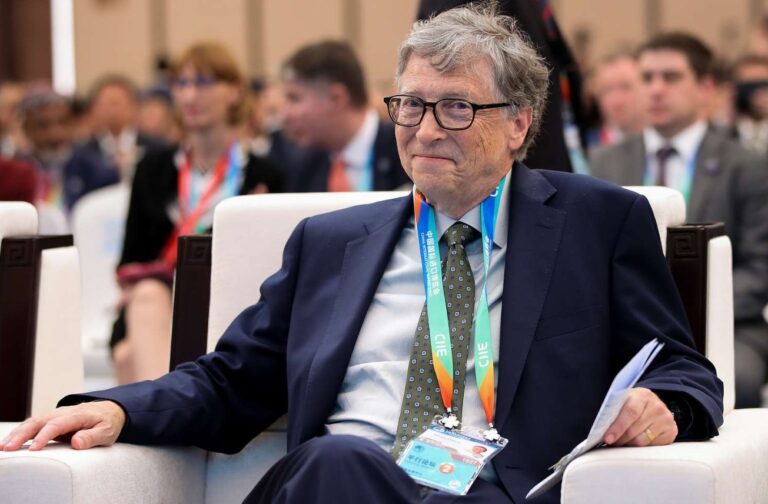
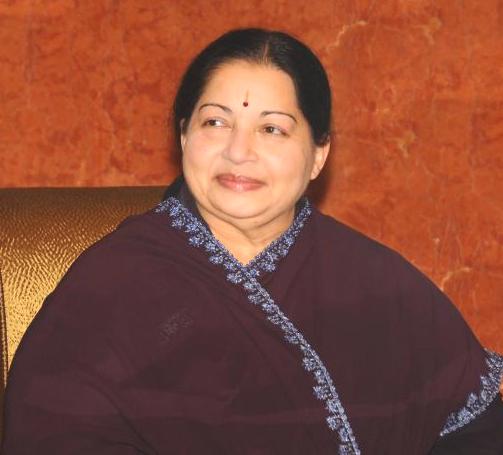



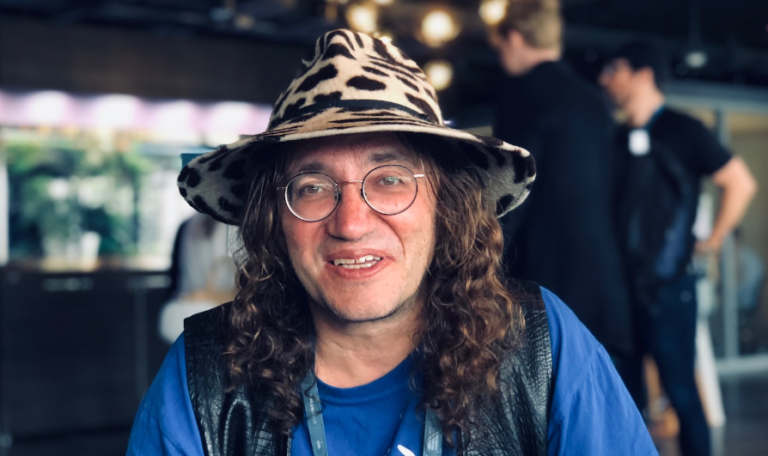






+ There are no comments
Add yours